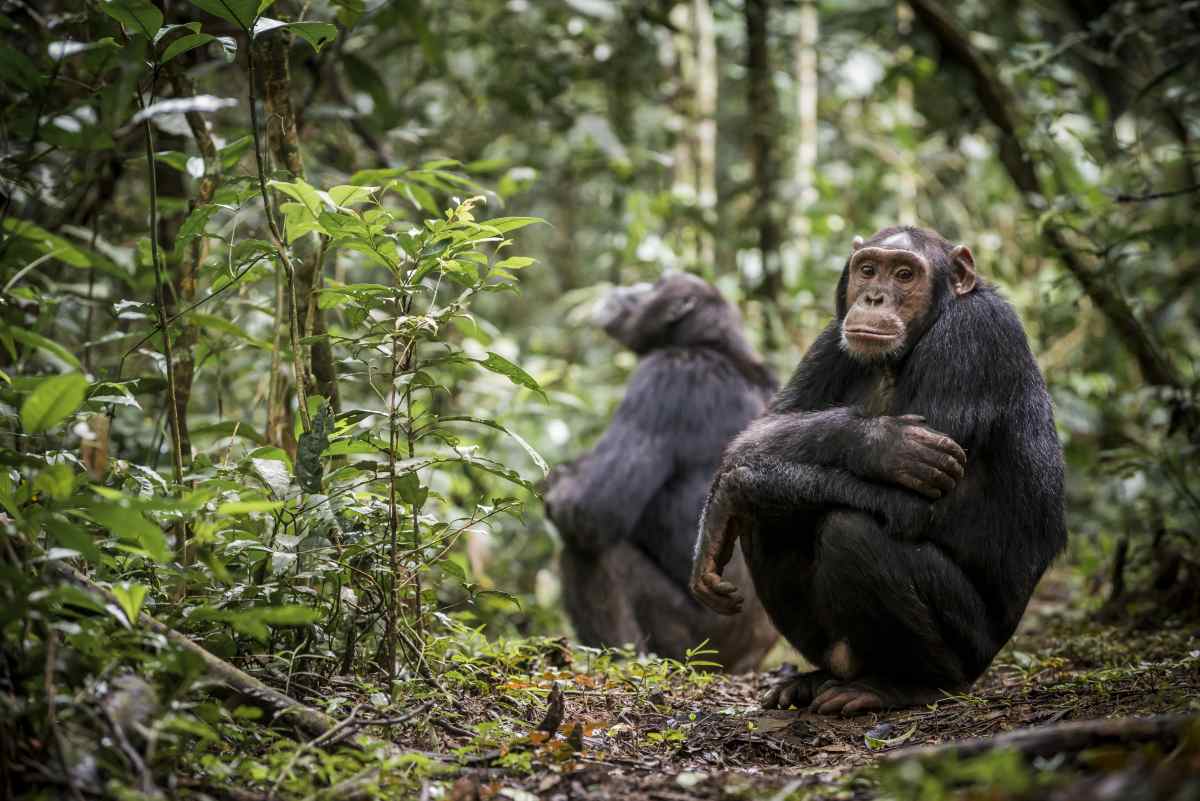Humans Evolved Two Legs Not to Walk or Run — Turns Out, They Just Wanted to Pluck Fruits

Unlike Mowgli, humans, in general, aren’t believed to have been raised by animals, although some of them are regarded as close genetic cousins. Chimpanzees, for instance. About 40 miles southeast of Uvinza, in Tanzania’s Issa Valley, dozens of chimpanzees spend hours and hours each day leaping, jumping, and climbing among the tree branches, plucking mangoes, bananas, papayas, avocados, and sometimes, tangy lemons. During a recent study, scientists were interested in examining the origins of how humans evolved two legs. They studied these chimpanzees for clues and documented the findings in the journal Frontiers.

Tanzania’s Issa Valley is a hub for researchers who are interested in studying the behaviors, strategies, and tendencies of our Great Ape ancestors. Once lush and wet, the valley is now reduced to an open, dry woodland, experts like to refer to as “savannah mosaic.” This woody mosaic is punctuated with woodlands, rocky outcrops, riparian forests, river valleys, and jungles characterized by open-crowned canopies. Every few days, there is a human-initiated grass fire intended for the regeneration of the ecosystem. But one of the most highlighted bits about this valley is its chimpanzees, these fierce, predatory, ancient beasts.

Some of them have clumps of bushy white beards clinging to their chins, a testament to their age, while the young ones, like the infamously aggressive Frodo, are known for their unique and unusual mating displays. In this research, scientists observed these chimpanzees and analogized their foraging behaviors and locomotive capabilities to understand how humans evolved their bipedalism features.

The study was conducted collectively by scientists at University College London, the Max Planck Institute, and Greater Mahale Ecosystem Research and Conservation in Tanzania. From previous studies, they were aware that savannah-dwelling chimpanzees in Issa Valley maintained a high level of arboreality. Arboreality, in simple terms, refers to a creature’s ability to live and forage on treetops. However, the link between foraging positional behavior and tree structures remained unexplored. Over five months during the dry season, the team collected data based on their foraging behavior and locomotive strategies. The data was then analyzed to test for any effect on food type and the tree’s structure. The results were unexpected.

Earlier, they held the assumption that chimpanzees evolved bipedalism when they were pushed from the treetops due to dwindling forest food, and they evolved two legs so they could go on to hunt for food on the ground. But analysis revealed that even after evolving two legs, the beasts continue to climb, jump, and navigate through the trees to eat fruits and leaves. Many of them were displaying “safe behaviors.” Instead of jumping down from the tree and foraging on the ground, they seemed to be hanging under the tree canopies or standing upright and holding on to nearby branches with their hands to grab the fruit.

This indicated that they may have evolved bipedalism, not as a strategy to explore the world beneath the trees, but simply to make the foraging on trees more efficient. Instead of utilizing their two legs to walk in the jungle for foraging, they used these to climb and traverse more efficiently through the tree branches to access food.

Concluding this in a press release, lead author Doctor Rhianna Drummond-Clarke said, “For decades, it was assumed that bipedalism arose because we came down from the trees and needed to walk across an open savannah. Here we show that safely and effectively navigating the canopy can remain very important for a large, semi-arboreal ape, even in open habitat. Adaptations to arboreal, rather than terrestrial, living may have been key in shaping the early evolution of the human lineage.”
More on Green Matters
Evolution Keeps Turning Animals Into Crabs. Research Reveals What This Means for Humans